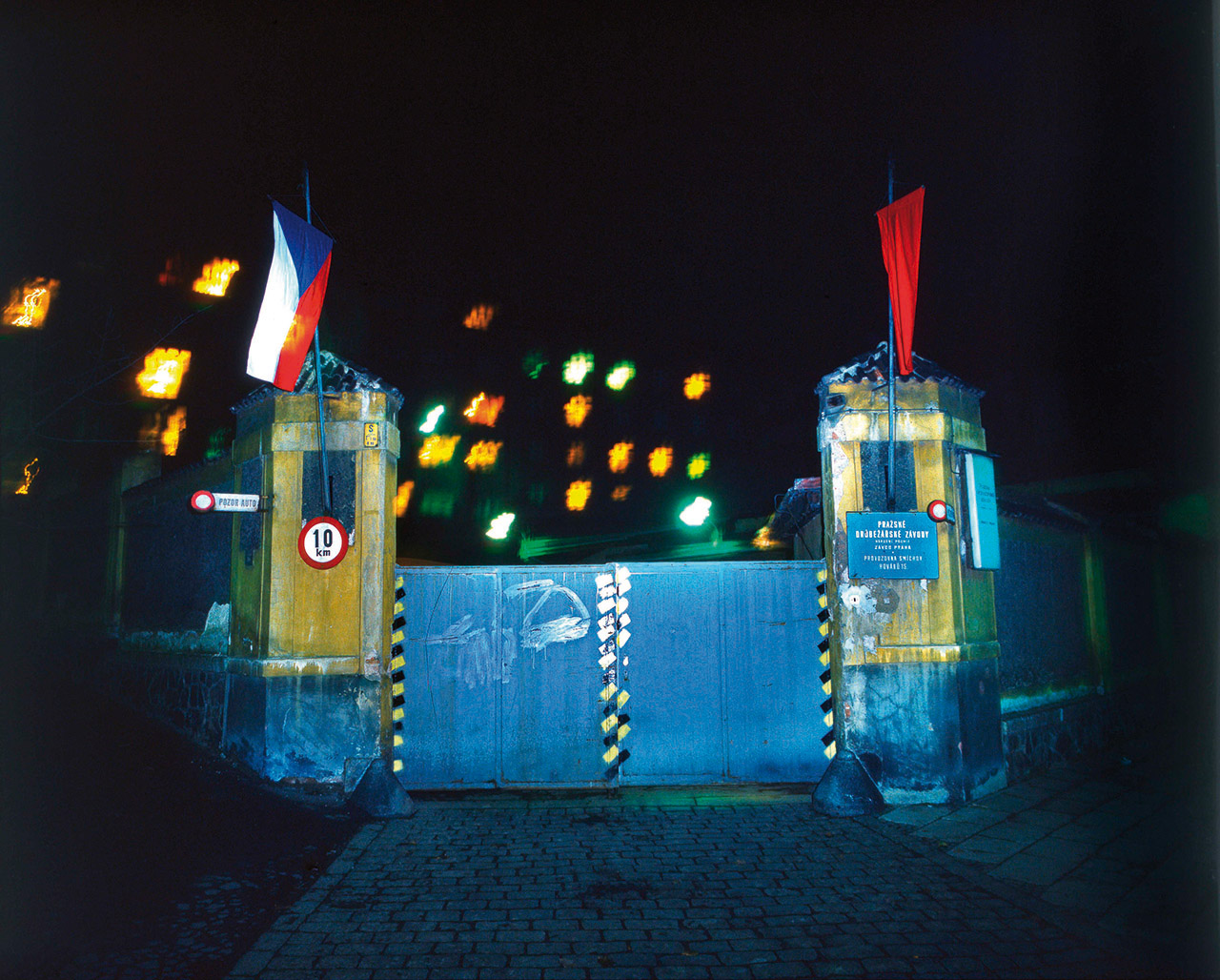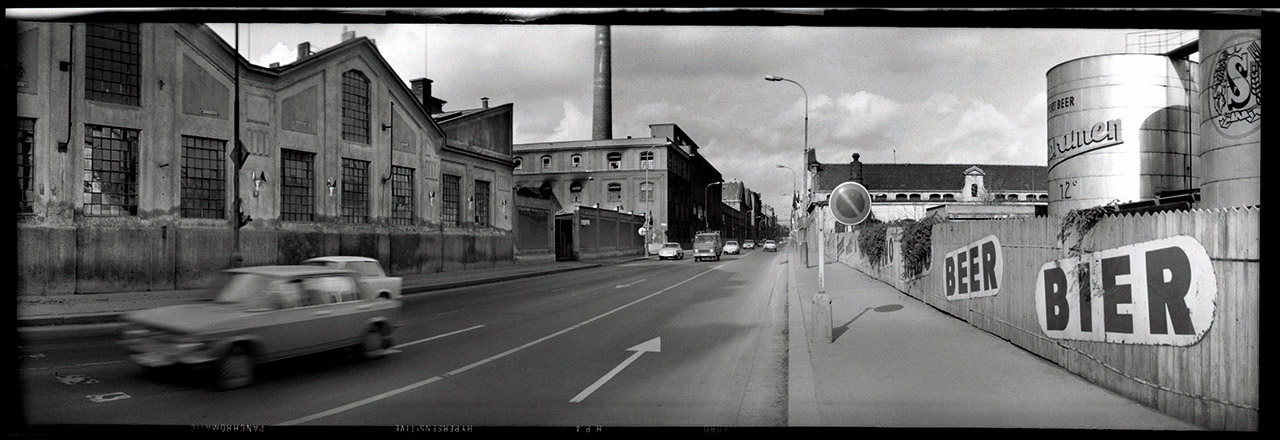Jiří Poláček
Magic of terseness
Among Czech photographers, Jiří Poláček is one of the most straightforward: by his life story, demeanour and his own fine photography that he has cultivated only when he’s had the time and the mood. He takes particular delight in confluences of circumstances, stories and relations. As such we have to get inside the tangled network of his own histories.
Jiří Poláček was born in Prague in 1946, and immediately after graduating from workers’ high school, he resolved to emigrate from Czechoslovakia. In 1966, he fled via Yugoslavia and Austria to reach his beloved United States, where apart from turbulent experiences he concluded a course of photojournalism at UCLA in Los Angeles. In 1972, he unexpectedly returned to socialist Czechoslovakia–partly because of the threat of being drafted into Vietnam. Soon he found employment with the Czech Press Agency photographic laboratories, where he worked for eight years in the department of large prints. In addition, he studied photography externally at FAMU, 1974–78, concluding with his diploma project consisting of panoramic photographs depicting Prague’s Smíchov neighbourhood.
For this, one must look back a few years to the end of 1974, when Poláček meets photographer Jan Svoboda and is instantly enchanted by his magical work (“There had been nothing so gorgeous at that time”). The appreciation soon became mutual (perhaps this could be because they were the two tallest Czech photographers) and, after intensive training in his non-traditional positive process, Svoboda entrusted Poláček with the enlargement of new prints for his Brno retrospective, and subsequently to most of his new new prints, ending up preparing the photographs for Svoboda’s monograph, printed in 1991, more than year after the artist’s early end.
Winding back to the discussion, it is because of Svoboda that Poláček got to the panoramic series–photographs that were taken with what may be the most famous camera in the history of Czech photography: the wide-angle Kodak Panoram 6 x 18 that Josef Sudek had given to Jiří Toman. After Toman’s death, his widow gave the camera to Svoboda, who allegedly after several attempts sold it to his assistant Poláček, who used it for capturing the by now renowned Smíchov panoramas. Later on, the camera was often borrowed by Poláček’s friend, Ivan Lutterer – but that’s a different story.
Smíchov is Poláček’s native neighbourhood and Poláček is its passionate connoisseur: “Smíchov is like a textbook of architectural history: every block further from the centre is another epoch.” An additional series dedicated to Smíchov that is an important part of Poláček’s photography is “Smíchov at Night”. The artist himself describes these works, elaborated using large format negatives and exposed with a manual flash, as being taken “on the way from a pub”. They were exhibited for the first time in October, 1980 in the Činoherní klub theatre in the frame of the series “9&9”, curated by Anna Fárová. Another reprise followed at the memorable group exhibition at the Plasy monastery. The entire series is defined by the agonising, yet today almost forgotten loneliness of a totalitarian city night.
Poláček returned to the Smíchov at Night series once again in 1983–1984, this time with colour slide film. That almost fantastically bizarre greyness of 1980s Prague reveals its real colours, lost during the day in the overflow of dust and vanity, only at night. Long exposures without a tripod, illuminated by a sudden flash, endows the subjects with a double existence: one nocturnally flying, the other clearly contoured. A hallucinogenic reality emerges, unifying developing documentary values with the genius loci.
Although Poláček approached closest to Svoboda’s already mythical personality, his images are (in contrast to many imitators) heading into different realms. Poláček’s pictures are, despite the stated background, cleared of any superfluous pathos. They are defined by their conciseness that mercilessly seeks out the actual shape of the city (echoing, perhaps, the earlier work of Miroslav Hák or Jan Reich). Not a minor role in Poláček’s unaffected attitude is the thorough knowledge of modern American photography, whose influence (both technical and programmatic) is clearly evident in the laconic stridency of Poláček’s photographs. As if Sudek’s Prague was suddenly invaded by Weegee and a bunch of lost gangsters. Poláček was for them (as well as for many foreign visitors of totalitarian Prague) a delightful and erudite guide–efficient in vocabulary, but understandingly keen.
(It must be added that, along with Ivan Lutterer and Jan Malý, Poláček authored yet another important work of Czech photography: a vast, sociologically-determined project entitled Homo Bohemicus. While photographing old costumes at the folk festival in Strážnice in 1982, the trio decided to use a tent studio such that daylight could be naturally difused. Lutterer and Poláček allegedly tailored the tent; Malý brought in the frame. After an entire day photographing a drunk worker wandered into the tent with a bottle of beer in his hand, demanding a portrait. The resultant picture instantly convinced all three friends that they just found a new, extremely rich theme: the Czech man. For the following fourteen years the trio would occasionally travel through Czech cities with a moveable studio, offering free portraits to people who’d happen by. Whereas the public would enthusiastically walk out with a Polaroid in hand, the artists kept the large-format negative, capturing with an almost ethnographic obsession, the slightest details of contemporary fashions and moods of various demographic groups during the era of late “true socialism” and early capitalism. The whole project was crowned in 1997 with a comprehensive publication, and was revived in 2002 (unfortunately, without prematurely deceased Lutterer) during the Czech cultural season in Paris.)
#9 Architecture
Archive
- #45 hypertension
- #44 empathy
- #43 collecting
- #42 food
- #41 postdigital photography
- #40 earthlings
- #39 delight, pain
- #38 death, when you think about it
- #37 uneven ground
- #36 new utopias
- #35 living with humans
- #34 archaeology of euphoria
- #33 investigation
- #32 Non-work
- #31 Body
- #30 Eye In The Sky
- #29 Contemplation
- #28 Cultura / Natura
- #27 Cars
- #26 Documentary Strategies
- #25 Popular Music
- #24 Seeing Is Believing
- #23 Artificial Worlds
- #22 Image and Text
- #21 On Photography
- #20 Public Art
- #19 Film
- #18 80'
- #17 Amateur Photography
- #16 Photography and Painting
- #15 Prague
- #14 Commerce
- #13 Family
- #12 Reconstruction
- #11 Performance
- #10 Eroticon
- #9 Architecture
- #8 Landscape
- #7 New Staged Photography
- #6 The Recycle Image
- #5 Borders Of Documentary
- #4 Intimacy
- #3 Transforming Of Symbol
- #2 Collective Authorship
- #1 Face















